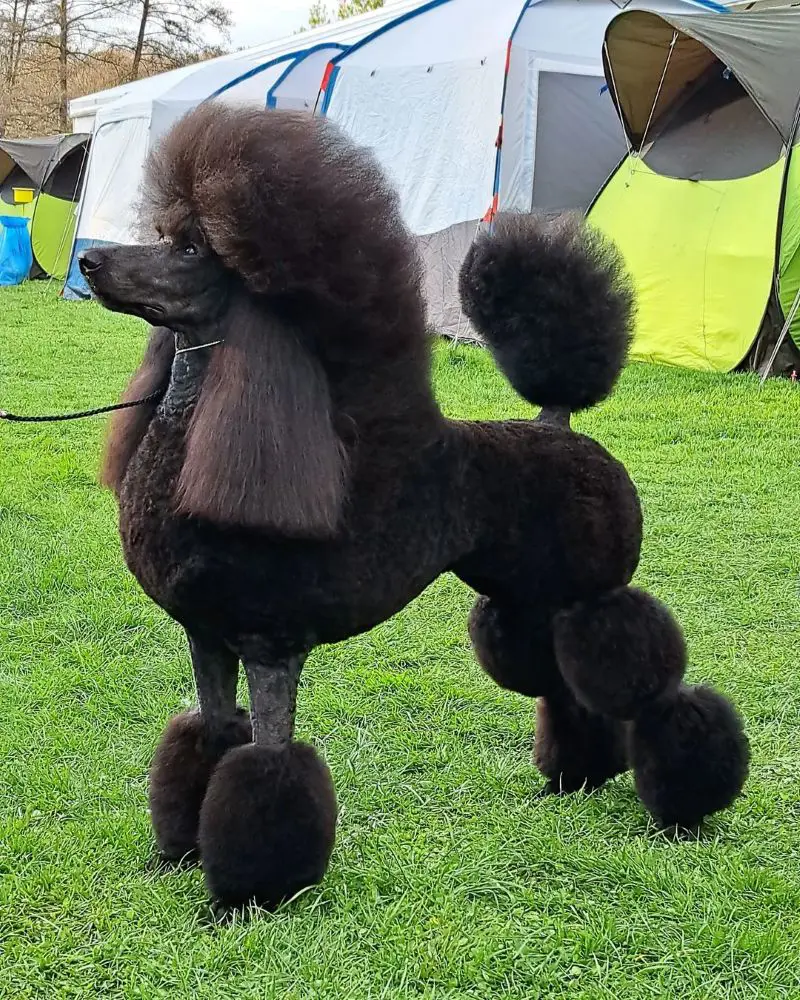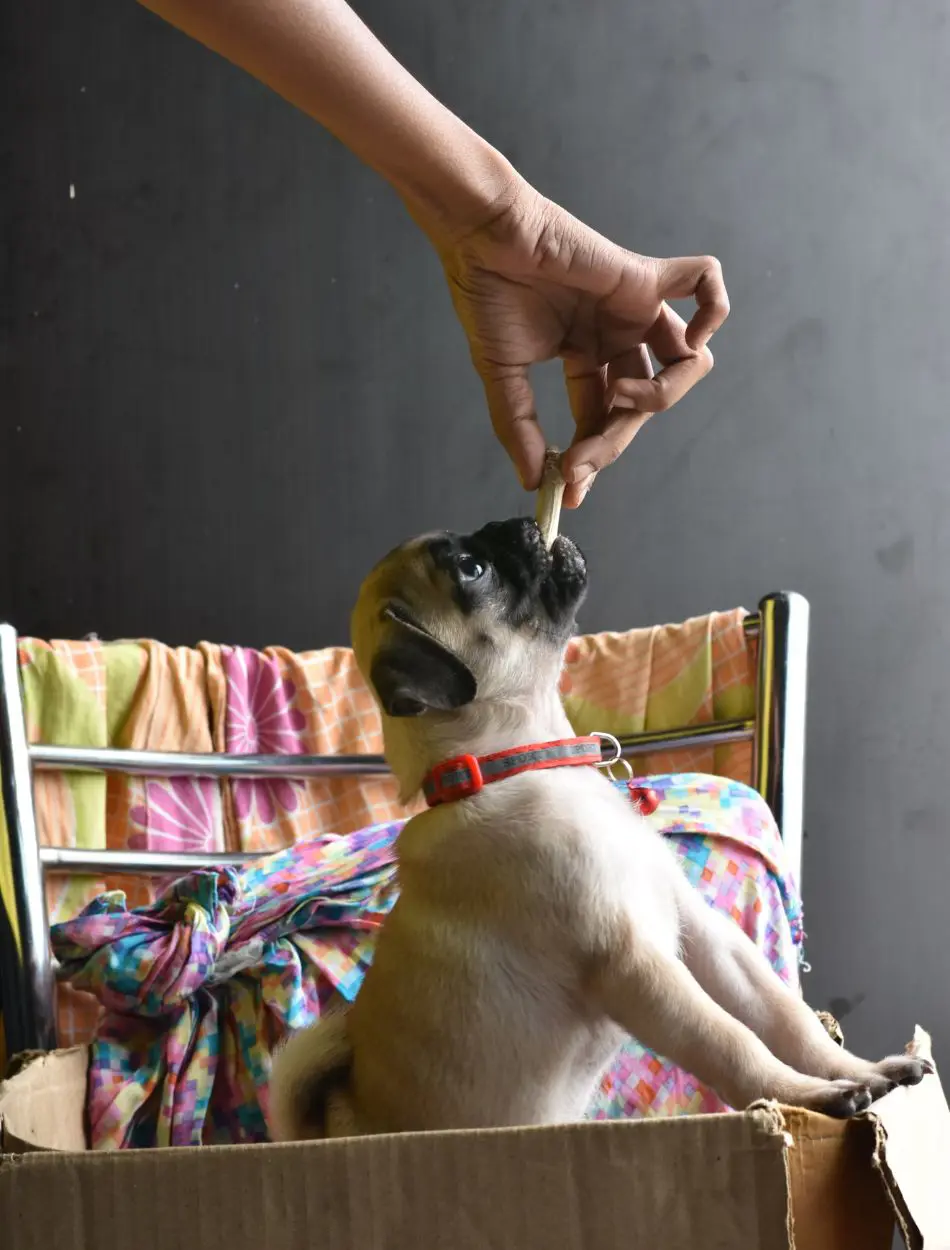What Are Those Black Spot On Dog Tongue

Black spots on a dog's tongue can worry any pet owner, but they are mostly harmless. While black spots on a dog's coat are a frequent sight, most of us aren't used to witnessing black marks on the tongues of our beloved pets.
A dog's tongue is more sensitive to physical stimulation and genetic conditions. While it is extremely rare in humans, the darkening of the tongue is pretty common in dogs, and benign in most cases.
Today, we explore the science behind the black spot on a dog's tongue and its connection to canine health.
What Are The Black Spots On Dog's Tongue?

The black spots on a dog's tongue are usually caused due to natural pigmentations, that are mostly responsible for giving color to their coats. These spots are not much different from the black spots that often appear in the coats of many dogs.
While some dogs are born with these spots, others develop them during the first six months of their lives. Likewise, these marks also don't remain the same throughout the dog's life as they can change in shape and shade. However, this trait is relatively rare, with only about 10-15% of all dogs possessing the black pigmentation in their tongues.
Why Do Some Dogs Have Black Spots On Tongue?
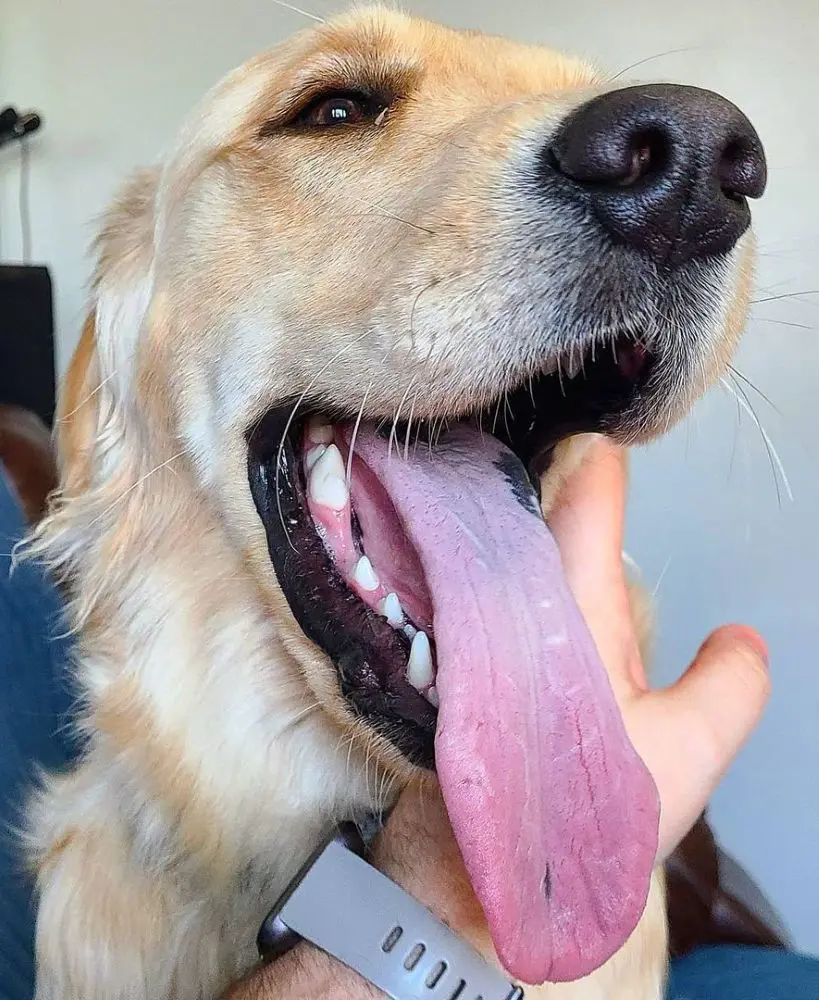
As mentioned above, melanin accumulation or pigmentation is the primary cause of black spots on a dog's tongue. However, melanin isn't always the cause, whenever a dog develops these black marks.
Besides melanin, other causes of black marks on dog's tongue include:
1. Breed-Specific Traits
Some dog breeds genetically inherit having black tongues or dark spots on their tongues, most notably the Chow Chow and the Shar-Pei. Both of these breeds are known for their distinctive blue-black tongues, a characteristic linked to their genetic makeup.
In these breeds, black pigmentation is a natural feature, likely due to the presence of extra melanin in their skin cells. Other breeds, like the Tibetan Mastiff, may also exhibit black spots or dark pigmentation on their tongues, although it is less common.
2. Age-Related Changes
As dogs age, their tongues may naturally develop darker pigmentation or additional black spots due to an increase in melanin production. This process, known as hyperpigmentation, is common in aging dogs as their skin and mucous membranes change over time.
Just like how their coat might change color or gray, a dog’s tongue may gradually darken as melanin deposits accumulate in certain areas. These changes are generally harmless and part of the aging process.
3. Health Conditions
While black spots on a dog’s tongue are often natural and benign, certain health conditions can also lead to pigmentation changes. One possibility is oral melanoma, a type of cancer that can appear as dark spots or patches on the tongue or gums. More common in older dogs, this condition needs immediate attention if new or unusual spots occur.
Additionally, hormonal imbalances, such as hypothyroidism or Cushing's disease, can also lead to the appearance of darker areas on a dog's tongue.
4. Injuries or Scarring
While not always the case, injuries in the tongue or the mouth can often lead to the darkening of the tongue or the formation of those dark spots. When the tongue sustains damage, such as cuts or burns, the healing process may lead to scar tissue formation, often altering the tongue's appearance.
The black coloration may arise from increased melanin deposition during healing or from necrotic tissue if the injury is severe. Similarly, scarring may also trap debris or bacteria in the affected area, further darkening the tongue. In some cases, black discoloration might indicate the development of a more serious condition, such as hyperpigmentation or prolonged inflammation.
5. Congenital Conditions
In some dogs, black tongues are inherited at birth, whereas in others, the spots develop in the first months of their lives. Although congenital black tongues are not harmful, they can result in unique spots or patches on a dog’s tongue that are present from birth or develop early in life.
If you analyze the puppies in all breeds, you'll notice that some breeds are genetically predisposed to congenital black tongues or spots. For example, the Chow Chow and Shar-Pei are prized for their fully black or blue-black tongues, a breed-standard trait. Meanwhile, in other breeds, black spots are often normal variations; breeds like Labrador Retrievers, German Shepherds, and Golden Retrievers can occasionally exhibit this trait.
Abnormal Black Spots on Dog Tongue
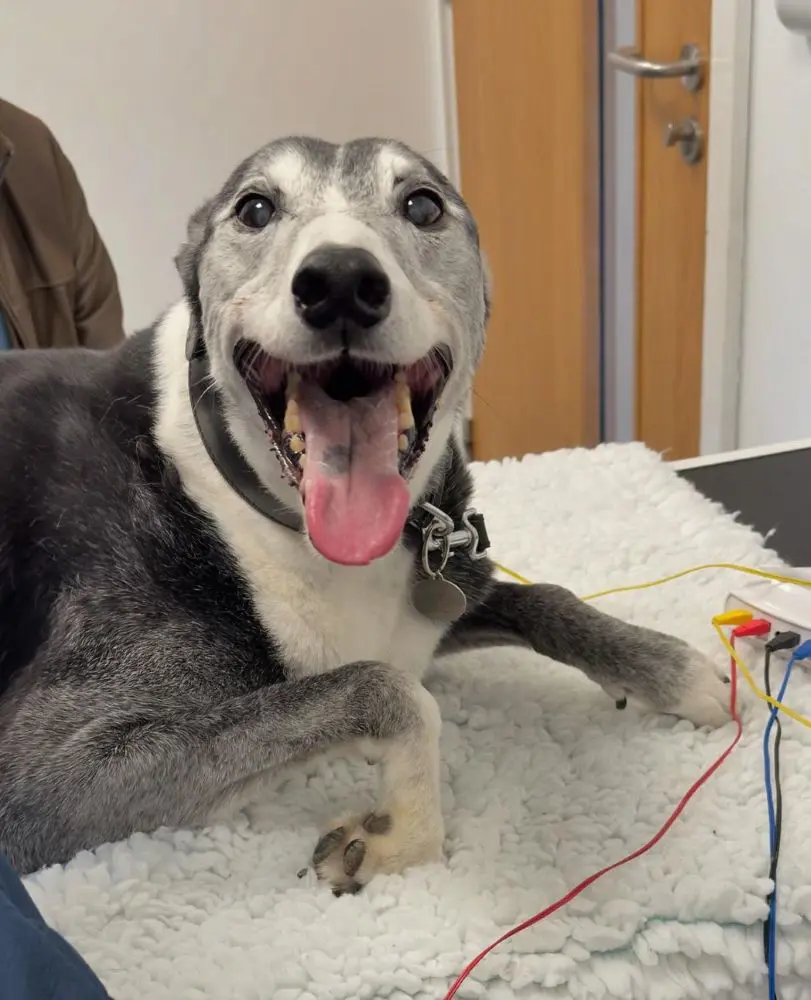
Black tongues or dark spots on a dog's tongue are not always harmless; in some dogs, these marks can be a symptom of a malignant condition. These spots appear irregular in shape, raised, or with uneven borders; they may differ in texture from the rest of the tongue.
Unlike congenital black spots, which are usually smooth and uniform in color, abnormal spots can vary in size, color, or texture over time. They could also be accompanied by other symptoms like swelling, ulcers, or bad breath.
Black spots of a malignant nature often imply the existence of an undiagnosed illness or disease, some of which include:
1. Melanoma
In dogs, melanoma is a type of cancer that arises from melanocytes, the pigment-producing cells in the body. This illness appears as dark, pigmented growths in the mouth, including the tongue, gums, or lips.
While melanomas with black or brown are easy to detect, some are unpigmented, usually avoiding detection. These tumors are aggressive, with a high potential for causing harm to organs like the lungs or lymph nodes.
When melanoma presents as black spots on a dog’s tongue, the spots often appear irregular or ulcerated, unlike the flats of a benign pigmentation. Affected dogs might also experience symptoms, such as difficulty eating and drooling.
2. Fungal Infection
Fungi can invade a dog's oral cavity, particularly in canines with weakened immune systems or pre-existing injuries; these infections can cause inflammation or even discoloration of the tongue.
When fungal infections progress, they may cause localized tissue death, appearing as dark or blackened patches on the tongue. Apart from impacting the looks of a dog, this infection can potentially cause further complications by spreading to nearby tissues.
3. Hyperkeratosis
If a dog's body produces too much keratin, a protein that makes up the outer layer of the skin, the physical condition is called hyperkeratosis. This overproduction leads to thick or rough areas, often appearing on the paws or nose.
Meanwhile, when hyperkeratosis affects the mouth, including the tongue, dark and crusty patches develop due to layers of thickened tissue and potential irritation.
On the tongue, hyperkeratosis can cause discomfort, especially during eating or drinking, as the thickened areas may crack or become sore. The black spots caused by this condition are usually raised and textured differently than the surrounding tissue. While not technically harmful, they can lead to secondary infections if not treated in time.
Black Spot on Dogs Tongue: Harmless or Dangerous
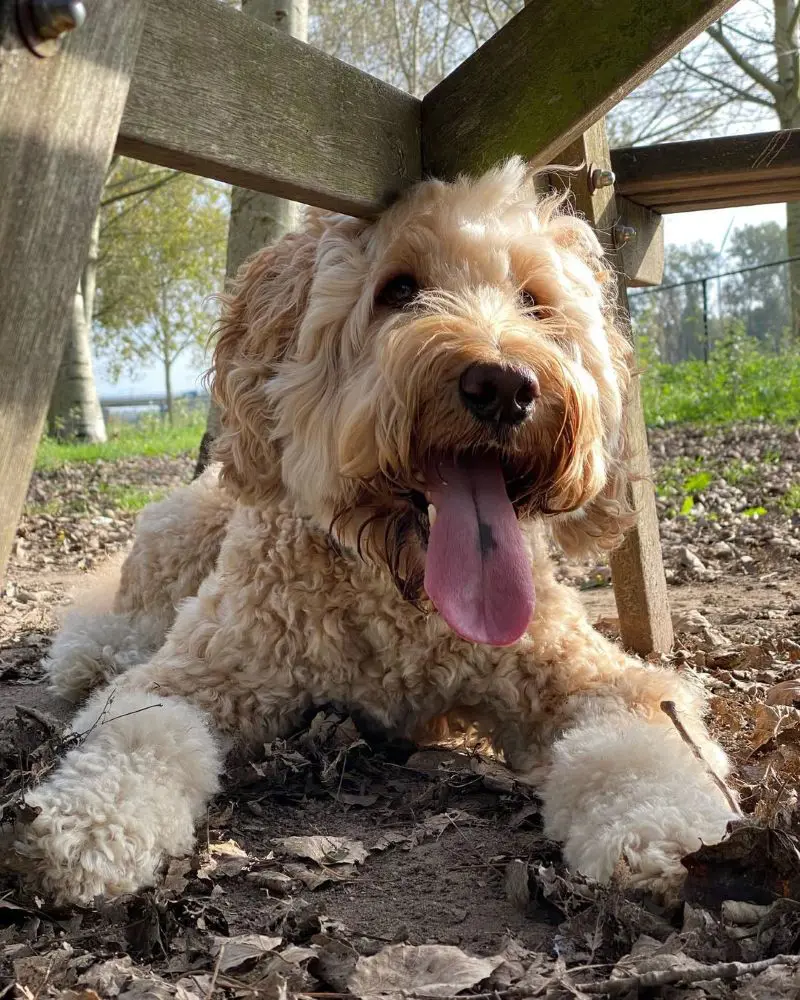
Determining whether a black spot on your dog’s tongue is benign or malignant involves assessing multiple factors: appearance, behavior, and related symptoms. Benign spots are usually smooth, similar in color, and present from a young age; these spots generally don't change over time or cause any discomfort.
On the other hand, malignant spots may show signs of irregularity; they are often raised or display a change in size, color, or texture.
Similarly, accompanying symptoms, such as drooling, difficulty eating, bad breath, or visible pain, often indicate a more serious condition like melanoma, a form of cancer. These spots might also bleed, ulcerate, or feel firmer than surrounding tissue.
What Deficiency Causes Black Tongue In Dogs?

Niacin, or vitamin B3, deficiency can trigger black tongue in dogs. Also known as canine pellagra, this condition is most frequently noticed in dogs with poor diets lacking vital nutrients.
Niacin is crucial for maintaining healthy skin, proper digestion, and normal functioning of the nervous system. When dogs don’t get enough niacin, discoloration of the tongue can occur, often accompanied by other symptoms like weight loss, diarrhea, and a rough coat.
Similarly, niacin deficiency leads to a breakdown in the tissues of the tongue and mouth, causing it to appear swollen, darkened, or even ulcerated. Dogs that are fed unbalanced diets, especially those lacking quality animal-based proteins, are at higher risk of developing this condition.
To address this issue, the dog’s diet must be corrected. High-quality commercial dog foods typically contain sufficient niacin, but homemade diets may need supplementation. Adding niacin-rich foods like liver, chicken, fish, or fortified grains can help restore balance.
What Is the Black Growth on My Dog's Tongue?
Most dogs inherit their black spots from their pigmentations, which are generally harmless. However, if you start noticing a sudden black growth on your dog's tongue, you should be concerned about the pet's health. Also, these black spots developed in adult dogs can change in size and coloration.
A black growth on your dog’s tongue that appears suddenly and is growing warrants immediate attention, as it could indicate a serious underlying condition. While some black spots are normal pigmentation, a newly developed and growing growth is abnormal. It may point to issues such as oral melanoma, trauma-induced tissue changes, or an infection.
Another possibility is an infection or abscess, causing blackened or dark tissue due to tissue death. Infections may arise from injuries or foreign objects lodged in the mouth. Fungal infections, like blastomycosis, may also lead to dark, growing lesions in some cases.
Recent posts
Dogs
Why Doberman Ear Cropping Is Necessary?
If you're considering your Doberman's ears, understand the benefits and risks associated with the process before giving your final approval. Cropping has been a controversial subject in the dog community. While it gives the pup an elegant appearance ...
18 Dogs With Long Nose
Dogs with long noses are not just about the looks but also serve functional purposes like enhanced sense of scent, aiding in agility, or helping with tasks like tracking. Their long snout gives them a unique appearance that differentiates them from o...
Top 20 Poodle Haircut That Looks Amazing
Poodles are often considered a symbol of beauty and luxury, thanks to their historical association with dog shows. This fancy breed, while beautiful in itself, benefits from the various haircuts that amplify their physical beauty and make them stand ...
Why is My Dog Always Hungry
If your dog seems continuously hungry, it would experience perplexing or maybe worrisome. Dogs are naturally captivated by food, but excessive begging, attempting to find scraps, or constantly acting as though they haven't eaten can sign that somethi...
18 Delicious Dog Lick Mat Recipes
Providing food to your dog on a lick mat can offer an interactive and fun challenge that keeps their mind sharp and engaged. It helps to release their stress as they lick the food by releasing hormones that soothe their nerves. Picking out what...
Why Your Dog Have Nightmares
Dogs are known to experience dreams during their sleep like humans and they may even have nightmares in some cases. Nightmares are common for any dog to experience, and some breeds may be more prone to them due to their unique behavior. It is c...


